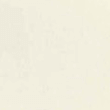Where to Buy Binders for School
- By JAM Paper
- Jun 13, 2024
Where to Buy Binders for School
When it comes to finding the best place to buy binders for school, it's important to consider both quality and affordability. Whether you're looking for a simple three-ring binder or something more specialized, there are a variety of options available. Many students and parents prefer to shop at large retailers such as Walmart or Target, where they can find a wide selection of binders in different sizes, colors, and materials. Online marketplaces like Amazon also offer a convenient way to browse and compare prices from the comfort of your home. Additionally, office supply stores like Staples and Office Depot are known for their extensive collection of binders and often have sales and discounts during back-to-school season. By considering your specific needs and budget, you can find the perfect binders for school that will help keep you organized throughout the academic year.
The Benefits of Using Quality Binders
Using high-quality binders for school offers several benefits for students. Not only do they provide a reliable way to organize and store class notes, handouts, and assignments, but they also help protect important documents from damage. Durable binders with secure closures can prevent papers from getting lost or damaged, ensuring that students can easily access their materials when needed. Additionally, using binders with clear view covers and spine inserts allows for easy customization and labeling, making it simple to identify the contents of each binder. Investing in quality binders can ultimately save time and reduce stress by keeping schoolwork neatly organized and easily accessible.
Use Cases for Different Types of Binders
Depending on the specific needs of students, there are various types of binders that can be used for different purposes. For example, standard three-ring binders are ideal for organizing loose-leaf paper and handouts for multiple classes. On the other hand, zippered binders with built-in storage pockets are great for keeping smaller items like pens, pencils, and calculators secure and easily accessible. For students who need to store a large volume of papers, D-ring binders offer a higher sheet capacity and a more secure way to keep documents in place. By understanding the different use cases for each type of binder, students can choose the best option to suit their individual needs.
Alternatives to Traditional Binders
While traditional binders are a popular choice for organizing school materials, there are alternative options that may better suit some students' preferences. For those who prefer a more compact and lightweight solution, binder dividers and expanding file folders offer a portable way to keep papers organized without the bulk of a traditional binder. Additionally, binder pouches and zippered pencil cases can be used to store and organize smaller items within a backpack or tote bag. Students may also consider using digital organization tools such as cloud storage or note-taking apps as an alternative to physical binders for certain classes or assignments.
Tips for Using Binders Effectively
To make the most of using binders for school, there are several tips that can help students stay organized and maintain their binders effectively. It's important to regularly clean out and declutter binders to remove any unnecessary or outdated materials, keeping only the most relevant and current documents. Using dividers and tabs to separate and label different sections within a binder can make it easier to locate specific papers and notes. Additionally, regularly hole-punching and filing papers as they are received can prevent a backlog of loose papers from accumulating. By implementing these tips, students can ensure that their binders remain organized and functional throughout the school year.
Choosing the Right Binder Size and Material
When selecting binders for school, it's essential to consider the appropriate size and material to suit your needs. Smaller binders are ideal for carrying a few subjects at a time, while larger binders with a higher sheet capacity are better suited for organizing multiple classes or larger projects. Additionally, choosing a durable material such as polypropylene or vinyl can ensure that the binder withstands daily wear and tear. It's also important to consider the spine width of the binder, as this will determine how many papers it can hold. By carefully considering these factors, students can select the right binder size and material to meet their organizational needs.
















